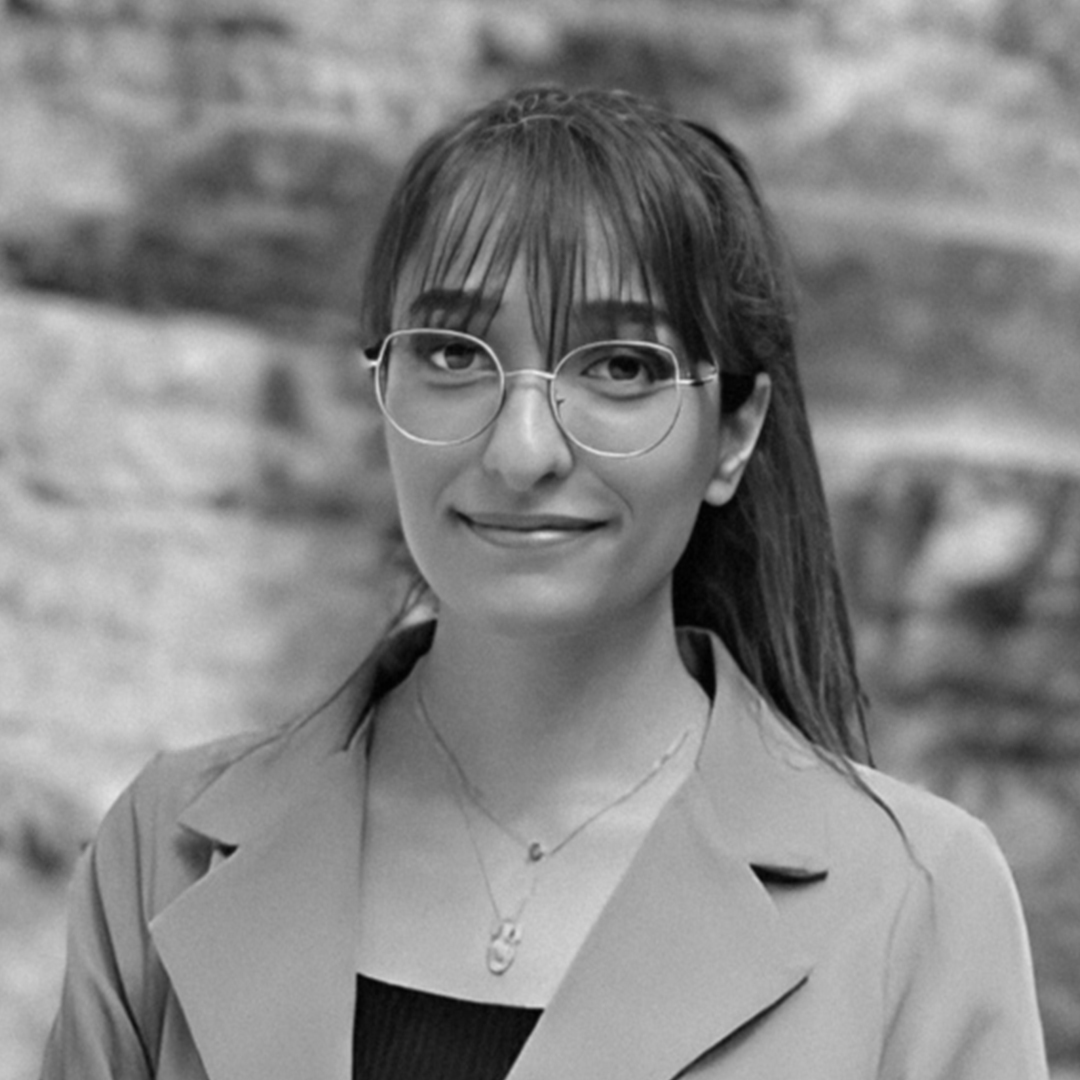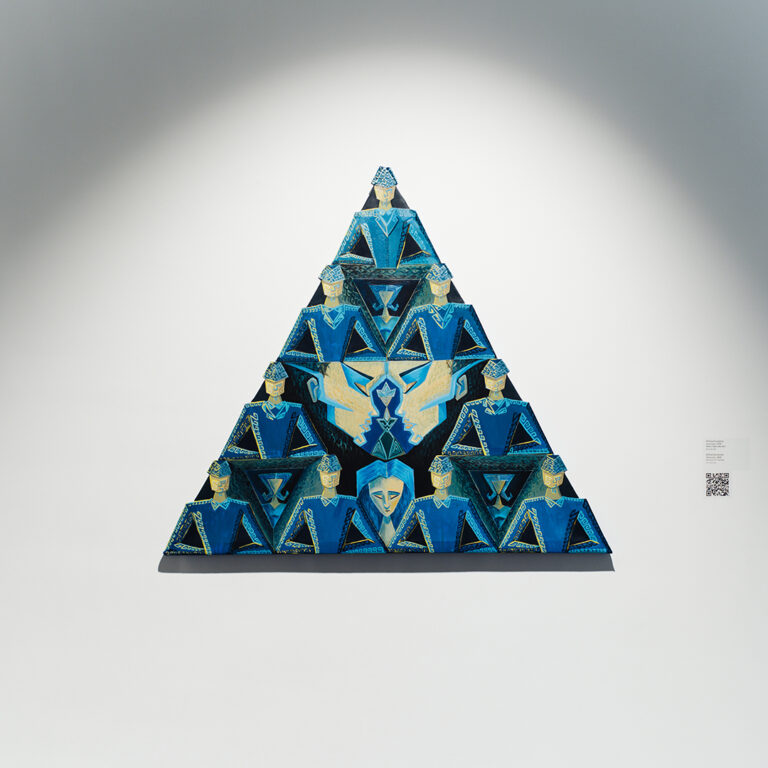
Kafiye Eyvazova
Hierarchy, 2024 – Acrylics on canvas; 110 x 120 cm
“The most important hierarchy in almost all human societies known so far is the gender hierarchy” – Yuval Noah Harari.
This work embodies the hierarchies that society has built against women. A large part of the pyramid-shaped work is made up of a patriarchal hierarchical system. Located at the 3 corners of the pyramid and forming a small pyramid with 3 male motifs, these anthropomorphic patterns reflect patriarchy. In the very center of the patriarchal pyramid, there is a female motif behind a small triangular window, and 3 male motifs with hands behind their backs in its circle seem at first glance to be protecting that woman. However, this posture, holding the hands behind the waist, is actually an indication of superiority in body language. The “S”-shaped patterns that create the facial features of these motifs are the “dragon” ornament widely used in Karabakh carpets, and the meaning of this pattern is strength and protection. If you pay attention to the facial features of the male subjects, you can easily think that these patterns create a sense of satisfaction on their faces. Society imposes a lot of expectations on them in this regard, and men in this patriarchal system live an unhappy life because they try to live according to those stereotypes.
While there is a wide triangular space between these three male motifs, the female motif is located inside the triangular window frame surrounded by a “wall” extending back from the male motifs. Rhombus patterns on these walls are used as eye symbols. This also shows that the main views of society’s condemnation and mentality are on women. We see that the field of women is completely violated, and the yellow light that falls on male motifs does not fall on the middle part where female motifs are located, which means that women are seen far behind men or as submissive people surrounded by obstacles. When we pay attention to the facial features of the female motifs, we see that there are no features that are different from the male motifs. In a patriarchal society, women are seen as lower compared to men. In regions where this system is more severe, women are not allowed to make any decisions about their lives and a woman’s expression of her feelings is not welcomed.
Among the three pyramids, which are symbols of patriarchy, in the very center of the general framework there is “idealism of beauty”, which becomes a hierarchy. The idealism of beauty is constructed in an inverted triangle with only female motifs. In the upper part, there are two identical female figures, and between them there is a small female motif with a crowned head. This crowned woman motif is a beauty icon and is designed with a geometric pattern in a shape that fits beauty stereotypes. Beauty idealism is an illusion that often changes depending on geography and history, but convinces many people of the “perfection” of their stereotypes. To express this illusion, the crown and body have a spiral pattern that curls inwards. Unfortunately, the majority of women around the world “torture” themselves under the influence of this illusion – very small noses, large lips, sharp chin, wide cheekbones, and painful operations to change their body shape. As a result, women who look like “twins” and have lost their true natural beauty try to feel valuable and self-confident by turning themselves into victims of illusion – the motifs of the two “twin” women described in the upper part embody this idea. Their faces are bent towards the icon, which shows that they obey the idealism of the eye, and the rhombus eye symbols on their faces show that their appearance is determined or created by society or beliefs. There is also an absent girl motif; people who believe in the idealism of beauty, or the reality of those stereotypes themselves, create a hierarchy of beauty and become a part of this hierarchy themselves.
In general, people who do not compare themselves to the opposite sex, regardless of their gender, do not belong in this patriarchy, and women who do not try to gain their self-worth and self-esteem through physical beauty and conformity to stereotypes do not belong in the hierarchy of beauty. When a person does not compare himself or herself with another person, they are freed from hierarchy. Hierarchy or frameworks consist of simple ideas. For this reason, none of the motifs in the pyramid-shaped work are depicted with their eyes open.

